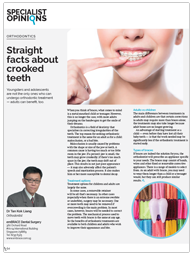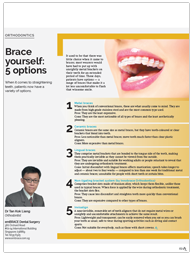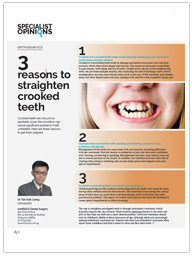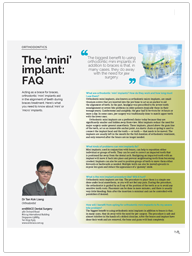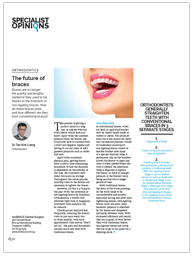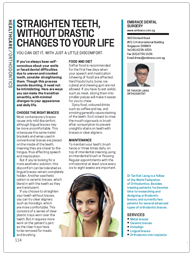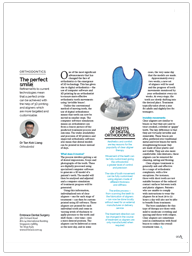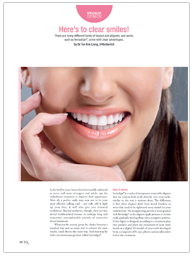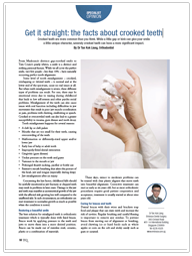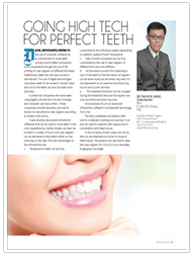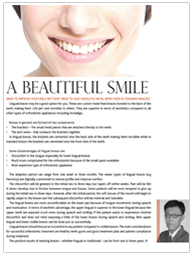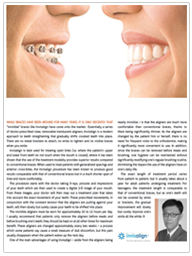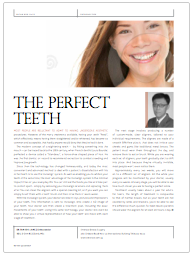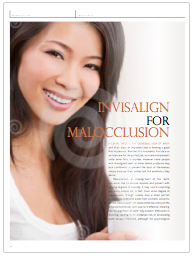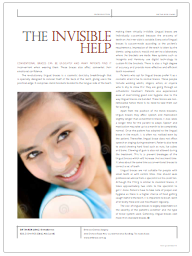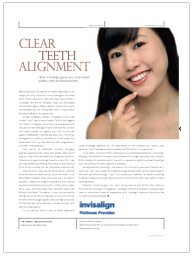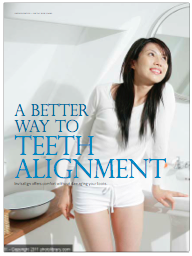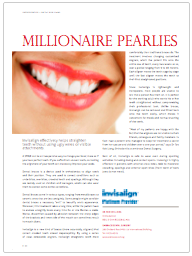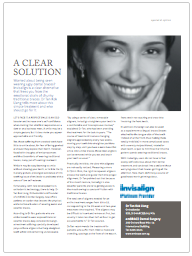REFINEMENTS TO CURRENT TECHNOLOGIES MEAN THAT A PERFECT SMILE CAN BE ACHIEVED WITH THE HELP OF 3D PRINTING AND ALIGNERS WHICH ARE MORE TARGETED AND CUSTOMISABLE.
One of the most significant advancements that has changed the face of orthodontics is the emergence of 3D technology. This has given rise to digital orthodontics – the use of computer software and 3D printing by an orthodontist to ensure more effective orthodontic tooth movements using ‘invisible braces’.
Unlike the conventional method of moving teeth, the use of digital orthodontics means that teeth can now be moved in smaller steps. The computer software simulation means an orthodontist can form a clearer picture of the predicted treatment process and outcome. The wider availability and precision of 3D printers and improved orthodontic software also mean that dental models can be printed in hours instead of days.
What does it involve?
The process involves getting a set of dental impressions, X-rays and photographs of the teeth. These are digitally processed using specialised computer software to generate a 3D model of a patient’s teeth. The model will then be analysed and adjusted and a computer simulation of treatment progress will be generated.
Using this information, individualised sets of clear aligners – one for each stage of treatment – can then be customprinted using 3D software. These aligners are printed for each individual tooth and come in varying levels of thickness to apply pressure to the teeth and shift them – over time – into a more desired position. The aligners can be delivered as soon as the next day, and in some cases, the very same day that the models are made. Approximately every two weeks, a new set of aligners will be used and the progress of tooth movements monitored by your orthodontist every six weeks. At every stage, the teeth are slowly shifting into the desired place. Treatment typically takes about a year for adults and slightly less for teenagers.
Invisible movements
Clear aligners are similar to braces in that they are used to treat crooked, crowded or ‘gappy’ teeth. The key difference is that they are virtually invisible and removable. These braces are often preferred over traditional metal-and-wire braces for teeth straightening because they are made of clear plastic and not visible. They are also more comfortable. Like dentures, these aligners can be removed for cleaning, eating and flossing.
Clear aligner treatment is generally safe and effective for a range of orthodontic complaints, with a few exceptions. For instance, those with short teeth are not suitable because of the reduced contact surfaces between teeth and plastic aligners. Patients who are unable to comply with instructions to wear the aligners for at least 20 to 22 hours a day will also not be able to benefit from treatment.
The best candidates for this type of therapy are those with mild to moderate crowding and spacing and those with relapse. Clear aligners are sometimes used in combination with fixed braces to reduce the overall treatment time.
BENEFITS OF DIGITAL ORTHODONTICS
Aesthetics and comfort are key reasons for the popularity of clear aligner therapy
Movement of the teeth can be fully customised giving the orthodontist a greater level of control and precision
The rate of tooth movement can be fully customised using aligners made of different thickness and stiffness
The entire process - from scanning the teeth to the fabrication of aligners - can now be done locally without need for an external manufacturer or delivery service
The treatment direction can be changed in the course of treatment as aligners are only manufactured when required

